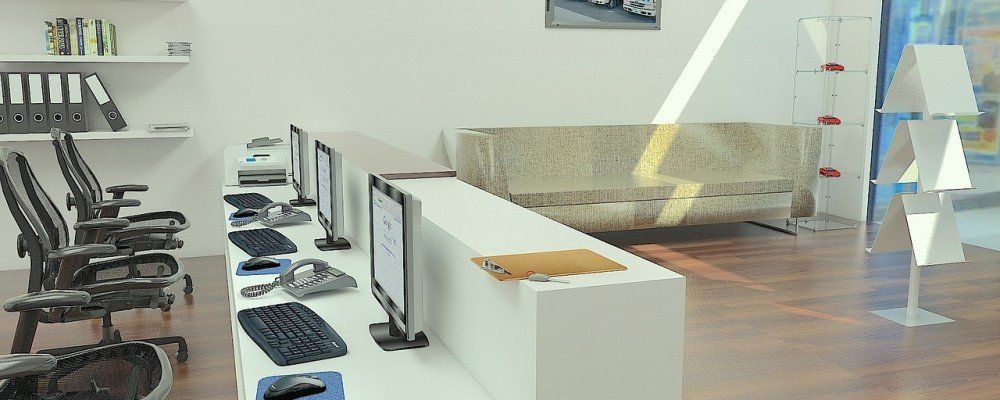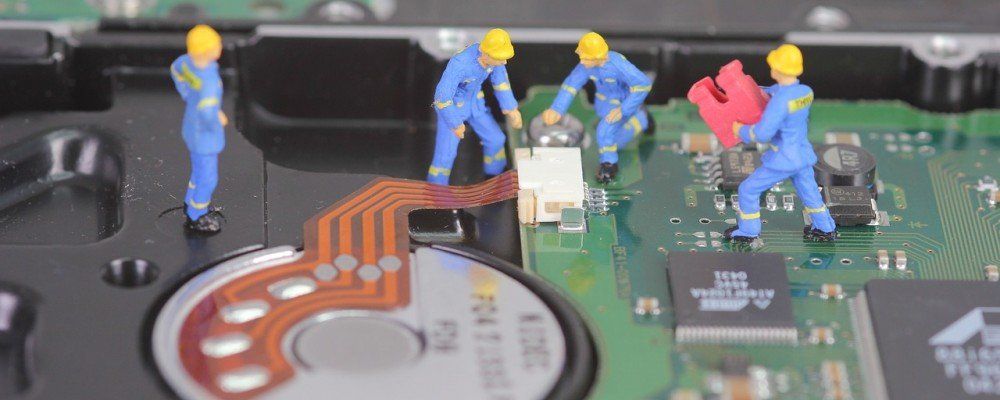
Running a successful business means having the right tools to get the job done, and the right staff to use those tools. If you are willing to pay top dollar for fantastic software, you need to make sure that your staff know how to use that software. Although a lot of software and hardware is made to be very user-friendly, getting training for your staff means they will know how to get the most out of it. Here are just a few reasons why it is worth while to invest in training for your employees.
The Best Software and Hardware Are More Complex
While most people are well versed in the most common types of software and hardware, like spreadsheet and tablets, most of those are imitations of the best computer products. The reason why you pay a bit more for more sophisticated technology is to reap the benefits of the best in the industry. The problem is that there are always tips and tricks that can streamline the process, but it requires dedicating time to learning about it. Your employees can read the manuals, but honestly, you know they aren’t going to do that. Paying for training means you will get the full benefits of what the new technology can do.
Making Processes More Efficient
The better software and hardware products tend to be a little less intuitive, largely because they include features and functionality that you don’t find in the cheaper products. If you don’t have your employees trained properly, you are basically paying more for the same functionality that you could get with the cheaper technology because your employees probably are not even aware of what the technology’s capabilities are.
It’s a Matter of Security
Another reason it is worth it to pay for employee training is that more complicated software and hardware will require additional training to make sure that security gaps aren’t created. It is likely that you will need to convert files and update networks after your purchase of newer software or hardware. You want to make sure that your staff is properly trained on how to do this so that they do not create problems and make it easier for malicious hackers to gain access to sensitive information.
There can be a steep learning curve when it comes to new or innovative technology. Finding the right training can ensure that your investment does not go to waste. Visit our website or give us a call at 954-341-9934 to learn more about what training classes we offer for products you need.

You probably already know how important it is to protect your server. There are great odds that you even have a decent anti-virus program working to keep things moving a bit smoother. The problem is that virus software isn’t enough. There are a number of other tools that will help to secure your data, but few are as effective as a firewall.
What Is a Firewall?
While most people have heard of firewalls, many don’t actually know what they are. Firewalls are usually a specific software (although there are some thatare hardware) specifically designed to protect all services that access the network. You can think of it as a strong fence keeping uninvited guests from easily accessing your information.Any port that accesses the public area is able to do so, all other ports are blocked so that malicious hackers cannot use them.
Your firewall will be an integral part of your server configuration. It should not be your only level of protection, but it can be a very strong security measure that will make it that much harder for malicious hackers to reach your data.
Implementation
Fortunately, firewalls are not terribly difficult to implement, although a lot of time and expertise are required to ensure that the firewall is effective. The more complex ones do offer a greater level of security, but they are also more difficult to install properly. It is best to install them when you first establish your server. However, if your server is already set up, then you can add a firewall with any changes you make to your services. Vendors Barracuda and Sonicwall are vendors who offer firewalls that are robust and varied so that you can find the right one for your needs.
Making Time
Adding a firewall should not take that long. However, it does require planning. You need to decide what kind of firewall software or hardware you want, what you would like protected by it, and when you have time to install it. If you would like help going through your options and figuring out how long you should plan to be down to have a firewall installed, you can visit our website or give us a call at 954-341-9934 .

Data is a commodity that most businesses cannot afford to risk being compromised. Not only do you need to keep your data safe from malicious hackers, you also need to keep it backed up so that you can restore it in the event that something happens to your computer or programs. With more companies moving their files and information to the cloud, there are different solutions to consider to keep your data from prying eyes and file corruption. A robust protection platform is among the most highly recommended because the platforms must meet strict regulatory compliance. That is exactly what Intronis Backup offers.
A Better Backup Means an Easier Restoration
Although losing your data is not something you want to think about, you want to ensure the data on the cloud is stored in a way that is easy to backup and restore. Of course, you hope that it never does happen, but planning for the worst can make it easier to remediate any damages should something happen to your data. The cleaner your backup, the easier it will be restore your information to its last backup. Timing is also an important factor – you need to be backing up your information often. Fortunately, the more often you backup your cloud data, the less time it will take to do each backup. When companies wait several days or a week between backups of their systems, it will take longer to complete the task and is more likely to result in lost data if a problem does occur.
The Right Kind of Encryption
To keep your data safe, you need strong encryption that you control. This is where Barracuda Intronis really excels. With 128-bit encryption, your data is as secure as bank records and government documents that are classified as Top Secret. This means that your backups are secure from many of the different security breaches that have made headlines over the last year. Encryption requires a key to unlock the information. Without the key, it will take over 100 years to unencrypt your data.
Additional Centers
In addition to your cloud space, there are mirrored data centers that are repositories for backups. The dual-coast data centers mirror each other so that your data is always available if you need to restore a previous version of your data.

There are many components to cybersecurity. Some are complicated and are really only necessary by large businesses. Other aspects of cybersecurity are just best practices for anyone who goes online (and that is the vast majority of us).
Over the last few years, it seems like there has been an increase in cybersecurity issues. The problem isn’t that there are more malicious hackers (they are more organized now, but there are not more of them), the problem is that many companies and individuals do not take the necessary measures to keep their information secure. It is incredibly important to keep your data safe, it is even more important for your company.
The following are some of the most basic types of cybersecurity measures. Learning a little about them can help you better understand how to better keep your information and data secure. Keep in mind that you will need to revisit cybersecurity a couple of times every year because it is an area that is constantly evolving.
Network Security
This one is a large area and actually covers a number of different aspects Typically, networks are managed by IT staff because they require dedicated resources to maintain them and keep them safe from malicious hackers. With a large amount of data being sent and received over your networks, you need to make sure that security is as restrictive as possible.
Encryption
Encryption essentially translates data into unreadable bytes that can only be unencrypted by the recipient. Messages and email sent within a business should always be encrypted to ensures that unauthorized personnel and persons cannot read them. This does mean that you want to encrypt things like text and instant messages.
Training and Education
One area that most businesses forget to manage is in training employees on being wary of emails that are from a malicious source. From being careful about the attachments in their email to being wary of different websites, the user needs to be responsible and cautious with their online interactions. Training users is the best way to ensure that you and your companies information is not compromised through something that could have been easily prevented.
Patches and Updates
All software and hardware need to be updated regularly. Often times, companies will release software updates with a wealth of updates. Some of those updates will be new features and functionality, but nearly every release will have bug fixes, often times related to vulnerabilities with the software or hardware. Patches always fix problems, so patches should be applied as soon as they are available. Updates should be made as soon as possible with minimal interruption to the network and work.
Backups
Backups are an absolutely essential part of any business, but it should also be part of everyone’s regular habits with their personal devices as well. In the event that you suffer hardware failure, corruption to your files, or a malicious hacker who uses ransomware to take over your computer, backups allow you to lose a minimal amount of information. Backups should be conducted daily, at a minimum.

One of the greatest threats to your systems and networks is a false sense of security resulting in the failure to maintain those systems once they are in place. After spending a considerable amount of time and money on new systems and networks, it is essential to maintain them. Failing to do so would be like purchasing a new car, then never doing any maintenance on it, like oil changes. Unlike a car though, failing to maintain your systems and networks has the added danger of making all of your data and your customers’ data vulnerable to malicious hackers. Even if you get the very latest in technology with the strongest security measures, six months from the completion of the implementation, those security measures will no longer be as secure as they were when you installed them.
Why Ongoing Maintenance is Needed?
You know why your car needs maintenance; the oil needs to be changed to keep the components running smoothly, the tires need to be rotated, and regular checkups ensure components are not too worn. This is necessary to ensure that your car continues to run without issues – it is a matter of physical safety.
Maintaining your systems and networks is a matter of securing data. Of course, you don’t need to worry about wear and tear, but you do need to worry about malicious hackers and improvements in technology. Malicious hackers begin looking for vulnerabilities in the latest security measures as soon as they are released. The more time that passes, the more likely vulnerabilities have been identified and are being exploited by those hackers. Technology is also constantly changing. Patches and new releases have additional security updates that fix vulnerabilities and provide the latest security measures.
What Maintenance Is Included?
Maintaining a system isn’t as difficult as it sounds, but like your car, it is best to have a specialist manage it. If you have IT staff, they can maintain it. Maintenance includes a few different tasks:
- Applying patches and upgrading the system with each new release
- Adding new components to the system or network
- Administering network services and email
- Troubleshooting problems
Troubleshooting may not seem like maintenance, but it is. Just like your car can start showing signs of a problem outside of regular maintenance, your system may experience some problems. Sometimes maintenance is about fixing problems, not just about avoiding them.
When people talk about server and network maintenance, it conjuresimages of long hours and difficult tasks that brings a business to a grinding halt. Proper maintenance will occasionally interrupt a business, but when it is done right, it prevents much longer interruptions caused by a breach or degradation of the server. When maintenance is done right, it should not take much time to complete.
Regular Maintenance Takes Minimal Time
Regular maintenance is something that should be done frequently. Patches and updates are usually published regularly, and if you stay current with them (updating your system, server, or network within a day or two of the release of the updates), then the amount of time required to complete the maintenance will usually be almost unnoticeable.
There will be larger releases that will require more time, but they will be few. Typically, the reason that maintenance interrupts regular business operation is that it is not done regularly, and applying the patches and updates will take longer since there will be more of them. If you let these updates accumulate, you will need to plan for outages to get up to date.
Just as you should keep to the regular maintenance schedule on your car, you should keep a regular maintenance schedule for your servers, networks, and systems. They may suffer performance issues if they aren’t kept updated . However, the real problem is how vulnerable these tools become the longer you wait to conduct regular maintenance. Several of the severe security breaches that made recent headlines were caused by companies failing to keep their servers, firewalls, and other security tools current. When you procrastinate on conducting basic and regular maintenance, you are opening your company and clients to unnecessary risks.
Improved Performance
While most maintenance relates to security, some maintenance can actually improve the performance of your systems and networks. The maintenance that improves performance typically will require some down time, but that can be done outside of regular business hours. These kinds of changes should be verified prior to resumption of regular business operation as they can affect other aspects of the system or network. A regular maintenance checklist of things to verify can significantly speed up the process.
When you think of technology, you immediately imagine computers, smartphones, tablets, and other gadgets. However, there is one major piece of technology that still remains from the old days and just keeps changing and evolving with the times – phones. Most companies do not want to give smartphones to their employees for regular use, particularly if employees work in the office. Instead, companies are moving to new technological advances like virtual phones and soft phones. Even the landline is still used in offices, but it is connected to the network, making all of the information (including voicemails) easily accessible from anywhere.
Phones have changed and evolved, keeping the same basic functions while incorporating many of the technological advances to keep them relevant and affordable. This means moving much of the functionality to the cloud.
Understanding VoIP
Voice over Internet protocol, typically referred to as VoIP , lets you access your phones from anywhere. Traditional landlines have fantastic voice quality and you don’t have to worry about dropped calls, but with as much travel and telecommuting as is common in today’s business world, you probably cannot get by with just having landlines for employees. Of course smartphones are an option, but they tend to be a very expensive option, particularly if employees lose or break a phone. They also have the drawback of having unreliable service in some locations, which can be detrimental to managing clients.
VoIP gives you the best of both types of phones, letting people work from home using the same lines through a designated IP phone system. They can listen to voice mails, make calls, attend conference calls, and talk with coworkers without so many of the problems inherent with more traditional phone systems. Instead of being based on landlines or cell towers, the VoIP system works through software.
Two VoIP Options
For larger companies, there is the option to self-host VoIP. It requires dedicated staff who will work on the business’s systems (such as the LAN). They will be responsible for managing, upgrading, and patching the software as the technology changes and evolves. It is recommended in businesses that have a large portion of the staff work remotely or need to have constant access outside of regular business hours because VoIP is more cost effective.
For small to medium sized businesses, or those that do not have a large number of staff members who telecommute, the cloud-based VoIP is a better choice. This version is managed, including implementation and maintenance by experts of the service provider. It is far more cost effective because you won’t need to manage the hardware or dedicate staff to maintaining the technology. Customization and configuration is managed by experts who can make recommendations, particularly during the implementation and training period. Also, VoIP can be connected to mobile devices, so that staff can access their information from mobile devices.

